ARTIST INTERVIEW: CAMILLA WATERS, RCA CASS SCHOLARSHIP GRADUATE 2023
Posted by Cass Art on 8th Dec 2023
Supporting artists is incredibly important to us at Cass Art and the Cass family has been doing so for over 100 years! Today they are helping future generations of artists through the Cass Scholarship. Funded by Eric and Jean Cass, the scholarship supports one student each year at The Royal College of Art, by funding their tuition fees in full.
We caught up with graduate Camilla Waters to find out about her work, experience of art education and how the scholarship has helped her as she begins her creative career...
Hi Camilla, it’s great to speak with you! Tell us a bit about your creative journey so far.
I was raised in a small woodland village in Kent, where my deaf parents used lip reading and objects around them as a form of communication to bridge the language gap, which I believe is where my interests in Sculpture are rooted. However, it wasn’t really until my BA at the University of Reading, where I studied art, that my passion for sculpture ignited. I remember taking part in a workshop that involved pressing materials into clay, which we then fired. It was these 3-dimensional textures created that made me question how different materials could form an object.
During my studies there, I participated in an off-campus exhibition called the "Group Show." Housed in a vacant shop within our local mall, we aimed to reimagine shopping by replacing clothing with sculptures. My exhibit was positioned in the changing room area, creating an intriguing interplay between self-reflection, mirrors, and sculptures.
At the Royal College of Art, there were lots of opportunities to explore unconventional ways of thinking. Notably, I was part of a project where we devised a plan to make disposable vapes sustainable- making their batteries easily accessible to recycle, for example, as an innovative response to the climate crisis.
In general, the program's vibrant sculptural environment exposed me to diverse perspectives from other passionate artists that profoundly influenced my creative growth.
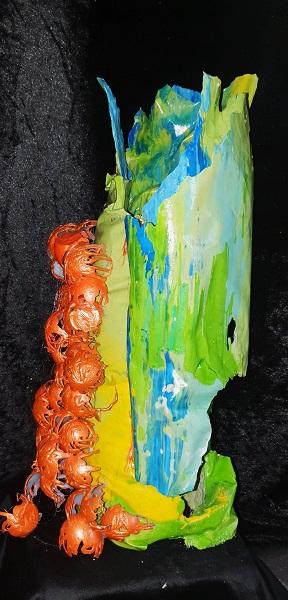
How would you say that the RCA Scholarship has helped you on your journey during your MA, and how has your work developed throughout the year?
The scholarship played a pivotal role in my artistic journey, affording me the ability to create work without the burden of financial worry. This allowed me to immerse myself in my creative process.
Over the course of the year, my work has developed fairly significantly. Initially, I built upon my interest from my BA days in relinquishing control over materials and allowing them to navigate their own path to formation. My sculptures initially stood as individual entities, united by their common origins. However, as time progressed, these connections between my works deepened, prompting the realisation that they should coexist as a collective. This evolution led me to craft an otherworldly narrative—envisioning my sculptures in an alternate reality akin to anthropomorphic beings suspended in a state of flux and interconnectedness.
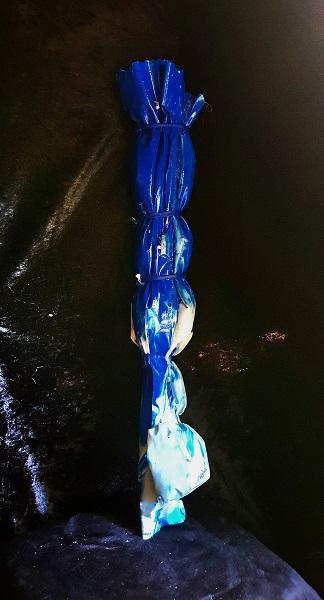
Can you explain the themes in your work and how you explore these in different pieces?
Embedded within my work are themes that centre around the concept of relinquishing control, a concept that draws inspiration from the artist Lynda Benglis. Much like Benglis, I celebrate the spontaneity of materials, allowing them to assert their own agency, resulting in unforeseeable textures and forms. A prime example lies in her 'Fallen Paintings' series, which kindled my exploration into pouring PVA and paint onto the floor. This experimentation led to the creation of vibrant, elongated pieces resembling seaweed, ultimately becoming part of the entryway curtain to my portal. I've distilled the essence of 'pouring' as the essential verb guiding all my work, drawing from Richard Serra's ‘Verb list’ for inspiration.
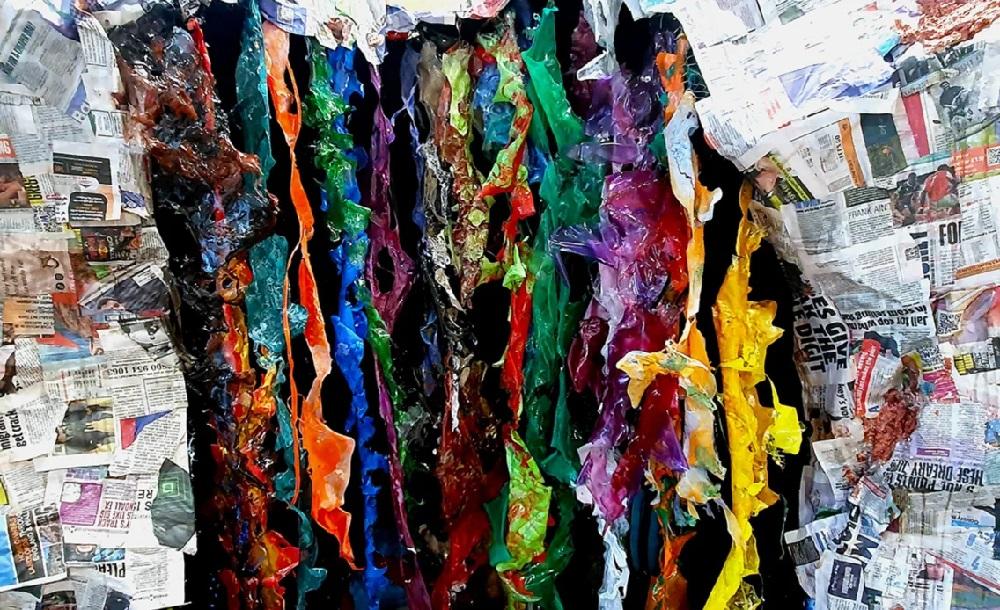
Another prevalent theme that threads through my artistic narrative, prominently seen in the 'Portal of Polymer,' is that of alternate realities. This idea took root after encountering Nicola Bealing's exhibition, "Chapter 1: Dead Man's Fingers." Her imaginative sub-maritime realm, forged through paintings and suspended sculptures, triggered my fascination with otherworldly landscapes. This curiosity has driven me to explore the interplay between sculpture and the human form within indefinable spaces, evoking a sense of interconnectedness.
Contained within the portal are sculptures distinguished by their artificial aesthetic—a recurring motif. This characteristic vibrancy in colour harmonises whilst simultaneously clashing with a plasticised allure. While watching "Willy Wonka," I observed the captivating gloss that adorned the foliage of the factory's garden, which bestowed a magical quality as if they were made of glowing crystalline structures. They exude an otherworldly allure with their vibrant tones, enchanting display of light with the plants mirroring delicate tendrils, akin to frozen dripping glue, or tall, sky-reaching stems, each radiating its own distinctive personality.
Lastly, the idea of dystopian and utopian landscapes is another theme which is currently an ongoing exploration. Influenced by J.G. Ballard's "The Drowned World," I craft an experience of an alternative world, one that embraces artificiality and unfamiliarity as innate elements. The shared space in the Portal of Polymer, for example, serves as a canvas to probe the boundaries of constructed environments, mirroring Ballard's characters who navigate post-apocalyptic terrains. In this pursuit, my sculptures ponder the dissolution of the familiar and welcome evolutionary traits characterised by perpetual growth and transformation within their biomorphic fluidity.
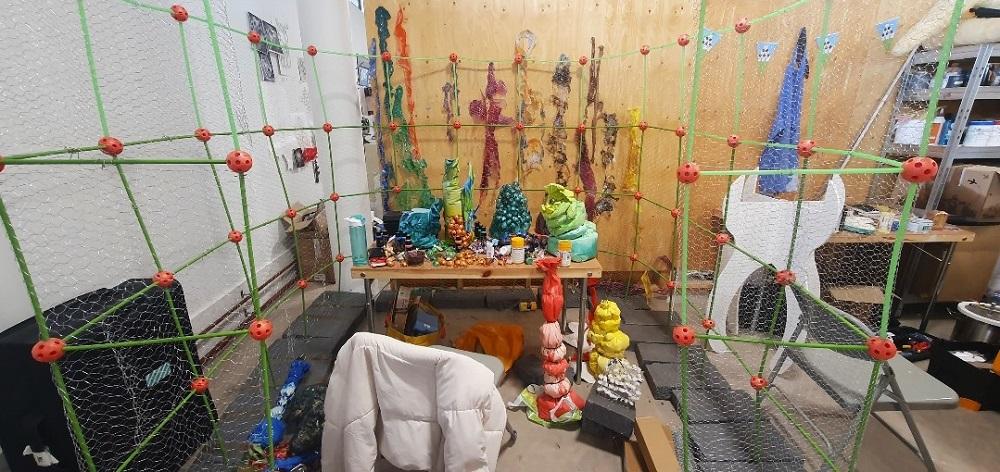
Your installation at your Degree Showcase transported us into an alternate reality, as we enter the space through a curtain of colourful strands of PVA, jewel-like objects emerge from the darkness. Can you tell us about this piece and talk us through how you created it?
My degree showpiece, named the "Portal of Polymer," serves as a realm where sculptures transcend their static existence to become emissaries of their own distinct language, amplified by their inherent process of formation. The idea of the space was born from my daily passage through a Clapham Junction tunnel. This tunnel, a conduit between entrapment and passage, instilled an aura of ambiguity and uncertainty. Thus, my portal reflects this dynamic, existing in a perpetual state of flux and urging viewers to navigate its contours, challenging their own boundaries and intricacies. I enveloped the portal in memory foam and velvet, using glue as metaphorical concrete, crafting a physically comforting skin akin to resting on a bed in a dream-like state. Through tactile engagement and exploration of intimate passages and communal ecosystems, my work sparks contemplation of our interaction with unfamiliar objects in the modern world.
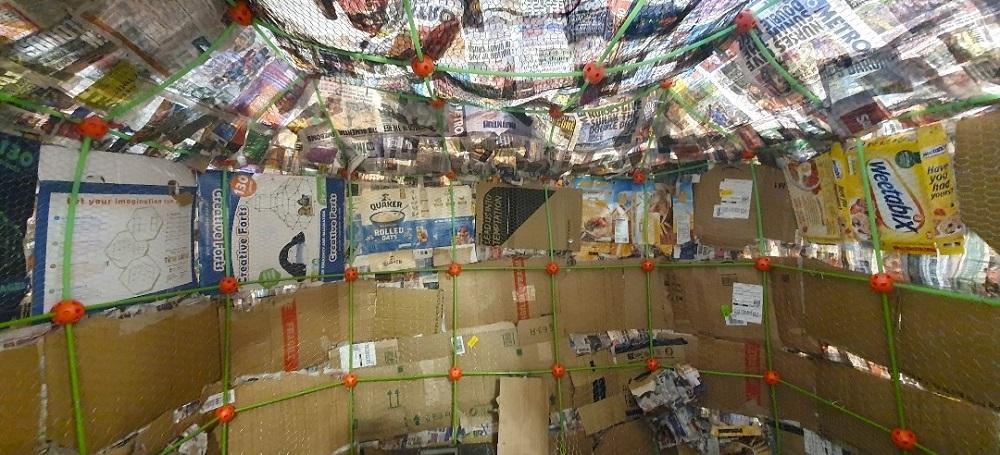
To create the portal itself, I mapped out the space with polystyrene blocks and erected a framework using chicken wire and a children’s den kit. I then used cardboard, tying it to the chicken wire to create a more solid base to papier mache onto. I chose papier mache as my material as I wanted the outside of the portal to have a rustic aesthetic that contrasted the vibrant objects inside. The roof, formed separately, employed the same technique before being integrated into the walls using den kit tubes as connectors. Once the shell had been made, I used a velvet fabric and lined the walls and floor, as well as adding foam to the floor to create a tactile experience for the feet. Sculptures, crafted individually, emerged by pouring Jesmonite into tied plastic bags that added textures to the body of the sculpture. Delicate creatures, nestled upon sculptures and scattered around the portal, were crafted by filling eggshells with hot glue, then freezing, de-moulding and painting them.
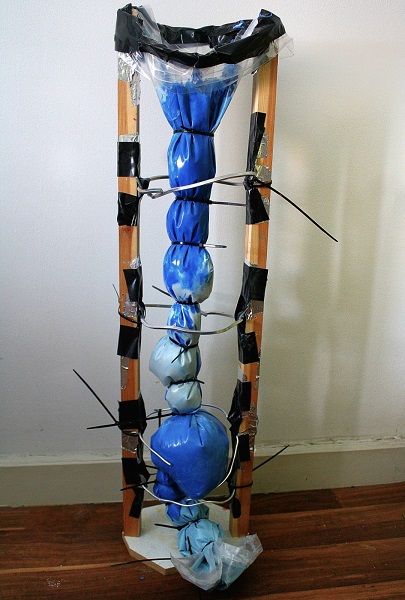
Your work is incredibly tactile and you actively encourage viewers to touch the sculptures. Why is this important for you and what do you hope viewers will experience when interacting with your work?
My inclination towards tactile experiences I believe stems from my upbringing, where touch served as a means of communication with my parents. A recurrent frustration I encountered during most gallery visits was the inability to engage with the exhibited objects physically. To me, touch provides a profound understanding of material and texture that sight alone cannot replicate. For instance, observing a tree and actually feeling its bark present contrasting encounters—one of distance, the other of intimacy.
Yet, I acknowledge the necessity of restrictions in galleries for practical reasons. However, recognising my role as a creator, I aspired to grant the audience the privilege of interacting with my work through touch, invoking new sensations and forging a more intimate relationship with art. This approach aims to offer an unconventional, tactile experience that might be unprecedented for many. My aspiration was to bridge the gap between the audience and the artwork, erasing the feeling of being an outsider and fostering a sense of interconnectedness—so that the audience becomes an integral part of the artistic encounter.
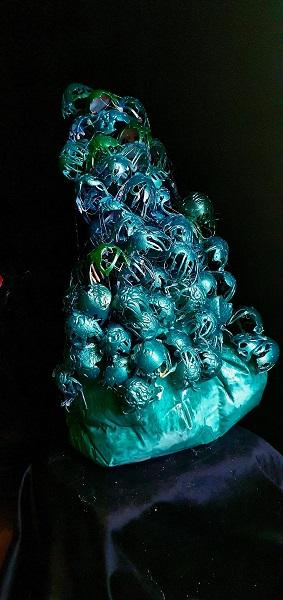
Do you have any advice for future art students?
I think my most important piece of advice would be to always look for inspiration around you. I have found that oftentimes, artistic reasonings and influences can be hidden within your everyday journey. In my case, the very tunnel I travelled through every day ended up serving as an essential root for the contextual narrative of my work. Additionally, to utilise the perspectives of as many people as you can. The multifaceted opinions of others can offer invaluable assistance to your own self-reflection that has the potential to resonate not just in the immediate present but across months, even years down the line!
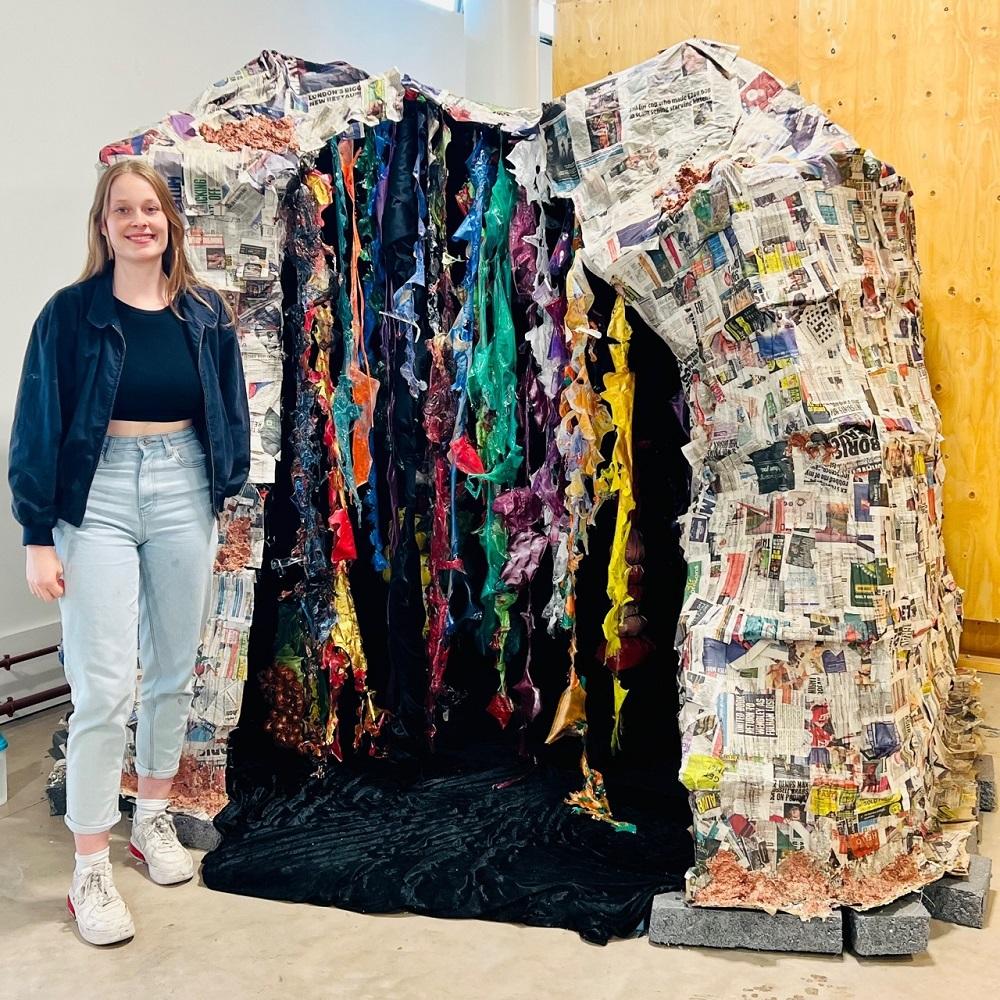
And finally, what’s next for you?
At the moment, I'm currently formulating my ideas for my next body of work, growing from my first look into alternate realities and looking into the forms that tunnels, their passages and their occupants can take. As well as currently saving up for my own studio to turn these ideas into a reality!
Thanks Camilla! Find more of Camila’s work @w_art_ers on Instagram.
Feeling inspired?
Read more artist interviews on the Cass Art blog.



